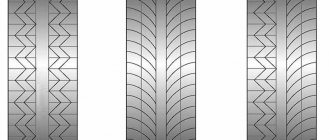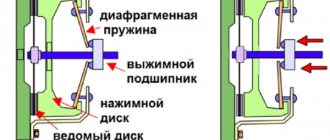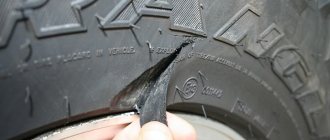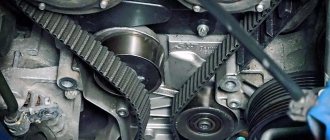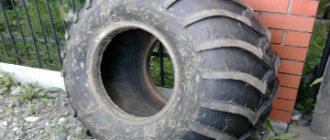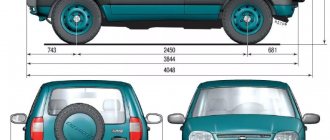Shelf life of tires in warehouse
Shelf life is the time during which the product does not lose its technical characteristics. For tires this period is 5 years. During the specified period, all the beneficial properties of rubber for cars are preserved.
But this does not mean that after this time the tires will become unusable. Simply, by law, drivers are prohibited from setting a storage period that exceeds the warranty period of operation. In fact, after 5 years, tires practically do not lose their properties, and they can also be used.
Attention! Car tires must be kept in a warehouse until sale in accordance with approved rules. Otherwise, the quality declared by the manufacturer cannot be guaranteed.
The following requirements apply to the storage room:
- temperature from +35 to -30 degrees;
- air humidity 50-80%;
- absence of sudden temperature changes and humidity changes;
- dark and well-ventilated space;
- inability to penetrate the sun's rays.
You can keep car tires outdoors for no more than 30 days. But during this time the products must be protected from the sun.
In addition, when storing tires it is not allowed:
- contact of tires with copper materials;
- contact with technical liquids;
- placement on reflective surfaces;
- storage at a distance of less than 1 m from heat sources.
Carefully! Tires without rims may only be kept in a vertical position to avoid their deformation.
Tire service life - what to consider
When determining the service life of winter tires, the time when operation is possible and safe is taken into account, taking into account the requirements of traffic regulations and the manufacturer’s recommendations.
In most cases, the manufacturer stipulates the physical suitability of the product, or legally this indicator is taken equal to 10 years. The practice of using winter tires shows that the established deadlines do not always coincide with reality. For winter tires from various manufacturers, according to reviews in Russia, the average service life is:
- European manufacturers. The mileage, taking into account different models, is in the range of 50-60 thousand km.
- Russian manufacturers. Many models are licensed, or our own developments, the quality of which has improved. The mileage ranges from 40 thousand km and above.
- Tires from China. On average, with average functional characteristics, tires exhibit good wear resistance. There are known cases of mileage on one set of up to 80 thousand kilometers.
Car owners at the stage of choosing a set of wheels - studded tires or Velcro, should take into account that the duration of use does not exceed several seasons or 30 thousand km. This is due to increased wear of the protruding elements.
Shelf life of rubber according to GOST
Shelf life refers to the time period during which the supplier guarantees the preservation of the quality of the product, provided that it is used correctly. According to Russian standards, this period according to GOST is exactly five years from the date of manufacture.
The average service life will help determine the special designation on the tire:
- ZR. The tires are designed for speeds over 240 kilometers per hour. Its properties will last for 6 years;
- H. Tires can be used at speeds of no more than 210 kilometers per hour, and they will last a maximum of 5 years;
- S. The maximum speed of use is 180 kilometers per hour. The product must be replaced after 4-5 years.
Factors affecting wear
The lifespan of a vehicle's tires depends directly on how often it is used and in what manner. The higher the mileage, the faster the tires become unusable. Mileage standards according to GOST:
- for passenger cars with a carrying capacity of up to 2 tons - 45 thousand km;
- for trucks 2-4 tons - 60 thousand km;
- for trucks over 4 tons - 65-70 thousand km.
On average, the service life on Russian roads during urban use can be about 5-6 years. It is reduced due to many conditions and factors:
- using tires out of season (soft winter tires wear out a lot in the summer, and summer tires cannot withstand winter temperatures);
- faulty shock absorbers and problems with the chassis;
- quality of roads;
- driving style - sharp braking and acceleration;
- transportation of heavy luggage;
- wheel alignment violation (in this case, car tires will wear out to a greater extent only on the inside or outside);
- the use of low-profile rubber, which wears out much faster.
Mechanical damage can accelerate failure - cuts, deformation during emergency braking, bumps after impacts.
Service life of summer and winter tires
Winter wheels are made of softer material than summer wheels, which means they are subject to more wear. Summer tires are rougher and therefore last longer.
The standard service life of wheel tires is not related to seasonality and is equal to 5 years according to GOST, but the actual operating time depends on:
- brands and models;
- serviceability of the car suspension;
- weather conditions;
- storage conditions;
- tire pressure level;
- driving habits of the car owner;
- quality of road surfaces.
With proper use and average mileage, branded winter tires will serve the car owner for 4 or 5 seasons; a less expensive tire may not need to be changed for 3 years.
Attention! Summer tire brands from well-known manufacturers are used a little longer - from 5 to 7, and more budget tires from 3 to 4 years.
These are average standards. It is better not to focus only on them, but to periodically check the condition of the rubber.
Here are the reasons for replacing it:
- deformation of the sidewalls, swelling, cracks and cuts on the side;
- many microcracks;
- the absence of more than half of the studs on studded tires;
- discoloration to gray with a white coating;
- the pattern on the tire is erased, that is, the height of the pattern is less than 2 mm for summer tires, and less than 4 mm for winter tires.
Useful to watch : When to change tires
How to maximize tire life?
The service life of tires a consumer can expect depends on a lot of external factors and his own responsibility. The average life expectancy of a car tire for a motorist who follows all the rules, taking into account imperfect roads in the CIS, can be 6-8 years. Tire life can be manipulated if certain rules are followed:
- ensure maintenance of optimal pressure;
- store correctly;
- service the car on time.
The pressure level directly affects the degree and type of wear. If the pressure is insufficient, the side parts of the tread will wear out, and if the pressure is high, the middle part will wear out. If the wheel alignment is damaged, only one side of the tread may wear out. Wear is measured by the most damaged area of the tire, so such rubber should be treated with caution.
The operating comfort of tires depends on how they are stored after the change of season. The ideal option is a dry, cool and dark room. If such a place does not exist, you can find a warehouse or garage, the owners of which are willing to leave automobile accessories for storage for a small fee.
The performance of shock absorbers and the car's chassis directly affects the wear resistance of the rubber. If you are confident that your vehicle will perform flawlessly, you can count on long tire life.
What guarantees do leading manufacturers provide?
Almost all manufacturing companies do not agree with the opinion of the legislation. They are not ready to admit that the shelf life and shelf life of car tires is only 5 years. Each manufacturer has its own point of view on how many years to use and store their tires:
- Michelin. Experts from the French company believe that if all recommendations are followed, the service life of rubber after the storage period does not decrease at all. They conducted a study that proved that there is no difference between new tires and a tire that has been sitting in a warehouse for 3 years. The company advocates that their products are not perishable goods, and it is not the storage time that matters, but the service life.
- Continental. This manufacturer claims that a product that has been properly stored for 5 years can be considered new, and with ideal use, their tires can last 10 years.
- Nokian. According to the company's engineers, provided that all recommendations are followed, the fact that tires have been in storage for a long time does not affect their wear. And tires of this brand become unusable after at least 6, maximum after 10 years.
The same views are shared by such leading suppliers of automobile tires for cars and trucks as Dunlop, Pirelli, Bridgestone, Yokohama.
May be interesting : Tire manufacturers by country
Factors that affect the service life of rubber
There are many different factors that affect the wear of car tires, the main ones are presented below:
- From the car and its carrying capacity : what is the maximum load the car can carry and whether your tires can withstand it (shows the permissible load index). Please note that, depending on this parameter, there are certain mileage standards for car tires on the road surface:
- For passenger cars: load capacity up to 2 tons, mileage 45 thousand kilometers.
- For trucks: load capacity from 2 to 4 tons, 60 thousand kilometers.
- Trucks with a carrying capacity of over 4 tons - from 65 to 70 thousand kilometers.
- Depending on tire size . Tires with a low profile most often hit the disc on rocks, which is why they last less. If the tires are wide, then friction increases when cornering, especially in winter.
- Driver's driving style . The tire wears out quickly if the driver often uses hard brakes or, on the contrary, accelerates quickly.
- The condition of the roads you drive on every day.
- Depending on the distance you travel and frequency of use.
- The quality of tires plays a very important role, for example, tires made in China are short-lived, while tires from well-known brands will last much longer. It is known that the service life of Chinese tires is approximately two seasons, while branded tires can last about seven years. When choosing tires, you need to pay attention to the manufacturer, because fakes are often sold under well-known brands.
- Various mechanical damage , such as cuts, bumps after impacts, deformation after emergency braking, accidents, etc.
Next, we will consider in more detail the instructions for certain actions that need to be performed in case of wear of car tires.
How to understand that your car tires have reached the end of their service life
In order to determine when the service life of car tires ends, during a detailed inspection you need to pay attention to the following points:
- If you notice that the tire tread has worn down to the level of the bridges between the tread, it means that the tires have reached the end of their useful life. The degree of wear can be determined by eye or using tools. On the outside of the tires there are numbers with different depths, so you can easily determine the degree of wear. In order to measure the tread height, you can use a ruler with a special depth gauge. For summer tires this parameter should be greater than 1.6 mm, while for winter tires it should be greater than 4 mm. If these parameters are less, then it is necessary to replace the tires. When wear is uneven, measurements should be taken in the area where the wear is most visible. Otherwise, if the tread edge is worn out on only one side, it means that the wheel alignment angle has been violated.
- Small cracks on the side of the tires indicate aging rubber and warn of replacement, while deep cuts require immediate replacement.
- If a bulge appears on the side of the tires - a “hernia” , this means that the cord layer threads have broken; in this case, the tires also need to be changed immediately. Also, such “hernias” can appear on the inside of the wheel, so you need to be extremely careful and carry out a timely inspection.
- If the tire wear on the outside is much greater than in the central part, then this may mean that the tires did not have enough pressure, if the opposite is true, they wore more in the center and less on the outer edges, then there was too much pressure.
When any defects are noticed in the tires, it is recommended to carry out a replacement rather than a rescue restoration in order to at least somehow extend the life of the tire.
What signs indicate that a tire is worn out?
Have you thought about whether it is worth buying new tires, and how many years can you drive on the old ones? In some situations, tire replacement cannot be delayed:
- You have been driving tires for more than 10 years. Even though the tires look like new, there are no cuts or patches, they are not worn out, you should still buy new tires and throw the old ones in a landfill.
- Tires have been used for 6–8 years and look very worn.
- The tires are worn almost completely (or unevenly), the rubber is torn or punctured. In this situation, replacement is required, even if the tires are completely new.
Of course, you can drive on tires for 10 years. However, given the fact that the road surface in our country is not ideal, tires fail much faster. Tires have to be changed because the tires are very worn out or the tires have been punctured or ruptured.
How do you know how much longer you can drive on your tires? Look out for the following signs:
- The rubber is worn down to the level of the wear indicator . If this happens, you should install a new set of wheels as soon as possible. Do your tires have wear indicators? Then, to determine how long you can drive on summer tires, look at the tread height. The depth of the tread layer must be at least 1.6 mm. If the tires are winter, then this figure should be 4 mm. When the tread depth is less than the specified values, you will have to install new tires.
- If the tires have studs, then you need to visually assess their number . Have you noticed that more than half of the spikes have fallen out of their mounting sockets? Then replacing tires is mandatory.
- If cracks appear on the tires, it means that the service life of the rubber has come to an end..
- There are cuts on the side of the tires . How long can you drive on patched tires? You should install a new set of tires as soon as possible. Otherwise, under heavy load, the tires will burst.
- Hernia formation . This indicates that the threads of the cord layer have broken. Such tires also need to be replaced.
We recommend
“Classification of tires: for summer, winter and off-season” More details
If you find at least one of the above signs, then you can no longer drive on tires.
Guaranteed shelf life of any tire from 5 to 10 years
A responsible car enthusiast should have an idea of the expiration date of tires. It depends, first of all, on the conditions of operation and maintenance, however, it is quite clearly regulated by law. The Ministry of Transport of the Russian Federation establishes a warranty period for the storage of cars and motor tires in accordance with GOST 4754-97 and 5513. It is equal to 5 years before the start of use (at the supplier’s warehouse). The full term is 10 years from the date of issue.
Motorcycle tires are no different from car tires in this case; the same rules apply to them.
Let's look at the operating features that affect shelf life, depending on the season and the car.
Do winter tires last as long?
The actual service life of winter tires rarely exceeds 30,000 km. “Bald” winter tires without studs can be rolled in the summer, but their grip on the heated road surface will be very poor. This must be taken into account, especially when braking.
So: tires that have not yet had time to wear out on the tread (that is, up to 1.6 mm of tread depth for summer tires, 4 mm for winter tires) are replaced either ten years after the date of manufacture, or when the rubber layer of the tire cracks, or when damaged.
- Find out what tire wear is considered critical here.
How to identify expired tires
According to the standard, the tire production date is indicated in an oval casting on the sidewall and consists of 4 digits. The first two indicate the week of the year, the second two indicate the last digits of the year of manufacture. It’s not difficult to count how much is left until the guaranteed expiration date. Everyone can decide for themselves whether they are ready to take a product that has been lying around for 5 years, or whether they can go to the next store and buy new tires. A good discount might be worth it.
Why does rubber deteriorate during storage?
During storage, rubber deteriorates if certain conditions are violated:
- orientation of tires when stacking them on warehouse shelves;
- minimum and maximum temperature;
- air humidity;
- illumination, especially in the UV range;
- temperature changes;
- presence of chemicals in the air.
Specific data for each item is provided in the technical documentation of the tires. But even without this, it is known how storage facilities for automobile tires should be equipped. What matters is how much the supplier follows the rules.
What happens if you drive on worn tires?
For a car to handle well, the grip on the road must be perfect. Typically, car owners believe that this principle is important to follow in winter, when there is snow and ice on the road. However, even if it’s summer outside, but you drive on bald tires, a not-so-pleasant situation may occur.
What can happen if you drive on worn tires:
- The car will become uncontrollable.
- The braking distance will increase . This may lead to an accident. After all, the person driving will incorrectly calculate the time it will take to brake.
- The risk of aquaplaning will increase . The wheels will “float” because the tread does not push out water.
- The car will turn around . This can happen at any time, so there could be an accident that could injure other drivers driving next to you.
- The tire will explode . This usually happens when tires are worn unevenly and their pressure is high.
Some car owners believe that it is possible to drive on bald tires in the summer. Doing this is strictly prohibited. If a traffic police officer stops you and the tires on your car are half worn out, you will be issued a fine.
It is easy to determine that tires are half worn out or bald. It is necessary to measure the tread depth. If this value is less than 1.6 mm, then you cannot drive on such tires, because they are bald. When tires have a tread depth of 4 mm or less, the rubber is considered semi-worn. Normal tires have a tread depth of 8 mm.
Of course, if you drive on dry asphalt, you won’t notice the difference between bald and half-worn tires. However, there are differences, they are especially noticeable when you brake. After all, if the tires are bald, the braking distance will be one length longer.
If you have to drive on worn-out tires on asphalt after rain, the car will no longer be controllable at a speed of only 50 kilometers per hour. When the road is wet, braking distances will increase. The same thing will happen if you drive in slush or ice in the winter. You can lose control of your car on bald or half-worn tires even in the mud. After all, then the earth sticks to the tires.
In addition, semi-worn tires wear out quickly. The driver is confident that it is still possible to drive on such tires, and does not worry about anything, because the tires are only 50% worn. In fact, due to the fact that the tread depth is shallow, braking products are poorly removed from the contact patch, and the car becomes uncontrollable.
If you brake sharply or accelerate at high speed, half-worn tires will instantly turn bald. You won't even notice it. The result is always the same: poor grip and fines. For 2022, if you drive on bald tires, you will have to pay 500 rubles. If you use summer tires in winter (and vice versa), the fine will be even greater.
Another danger of driving on half-worn tires is that the tires wear unevenly. As a result, your tire may explode at a time when you least expect it.
Knowing how long you can drive on your tires is necessary for those who use all-season tires. The main advantage of such tires is that they do not need to be changed depending on the time of year. However, there is one drawback: insufficient grip on the road surface. After all, summer and winter tires are designed for a specific season; they grip the road better when it is covered with snow or in thirty-degree heat.
Everyone knows what happens if you use bald tires. To protect yourself from negative consequences, you should regularly check how worn the tires are. Have you noticed that the tread depth on car tires is 4 mm, while you actively use the car? To protect yourself and your family from road accidents, you should replace your tires. Since each driver independently determines how long to drive on half-worn tires, it is necessary to analyze how actively you use the car and how many trips the rubber will last.
